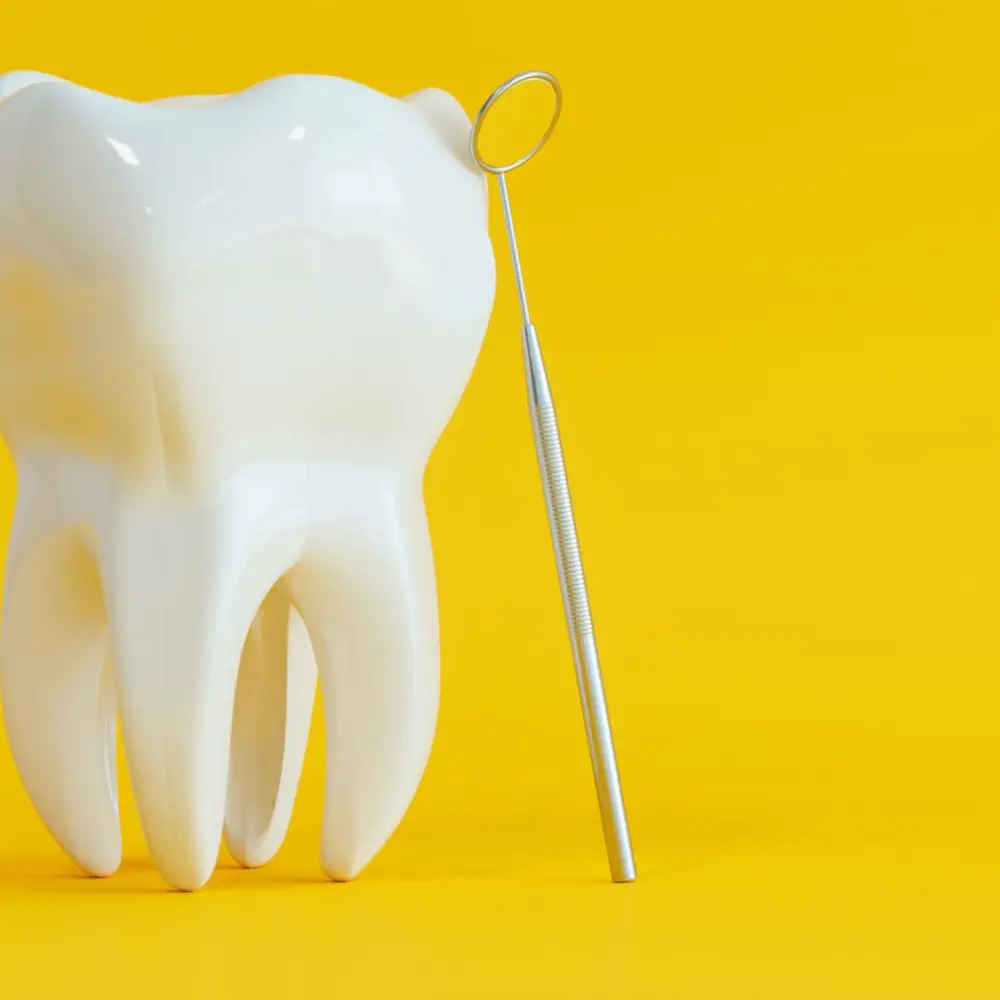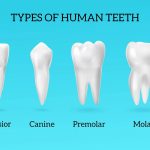Why Wisdom Teeth? Understanding the Origins and Purpose of These Mysterious Molars

Wisdom teeth are often the subject of confusion and frustration for many individuals. These mysterious molars seem to serve no real purpose, and their emergence often comes with a great deal of pain and discomfort. However, despite their seemingly useless nature, wisdom teeth have a long and fascinating history that is worth exploring. Understanding the origins and purpose of these teeth can provide insight into the evolution of our species, as well as the unique challenges that our ancestors faced. The term \wisdom teeth\ refers to the third set of molars that typically emerge in the late teenage years or early adulthood. These teeth are often seen as a nuisance, as they can cause problems such as crowding, impaction, and infection. However, evolutionary biologists have long been fascinated by these molars and have sought to understand their origins and purpose. Some theories suggest that wisdom teeth were once necessary for our ancestors, who had larger jaws and needed these teeth for chewing tough, fibrous foods. Others believe that wisdom teeth served as replacements for teeth lost to wear and tear, injury, or disease. Regardless of their original purpose, wisdom teeth remain a curious and intriguing aspect of human evolution.
Wisdom teeth, also known as third molars, are the last set of teeth to emerge in the back of the mouth, typically between the ages of 17 and 25. These mysterious molars have been the subject of much scientific research and debate, as they serve no obvious purpose in modern humans and can often cause painful dental problems. Despite their seemingly useless nature, wisdom teeth were likely critical to our distant ancestors who had larger jaws and needed the extra molars to grind tough food. However, as our diets have evolved over time, the need for these teeth has diminished, leading to the common practice of having them removed in modern dentistry.
Wisdom teeth, also known as third molars, are often misunderstood by many people. One common misconception is that everyone has wisdom teeth. However, studies have shown that up to 35% of the population may not develop them at all. Another misconception is that wisdom teeth always need to be removed. While some people may experience pain or discomfort due to impacted or overcrowded wisdom teeth, others may not have any issues at all. Additionally, there is a belief that wisdom teeth are remnants from our ancestors who needed them to chew tough foods. However, modern diets have rendered them unnecessary, and they are now considered vestigial structures. Overall, it is important to understand the true origins and purpose of wisdom teeth to make informed decisions about their removal or management.
Evolutionary Origins of Wisdom Teeth

Wisdom teeth, also known as third molars, are a common dental issue that affects many people. These teeth typically emerge in the late teens or early twenties, and can cause pain, swelling, and other problems when they don’t have enough room to grow in properly. Despite their status as a modern-day dental nuisance, wisdom teeth actually have a long history that dates back to our evolutionary ancestors. The evolutionary origins of wisdom teeth can be traced back to early humans and our ancestors, who had larger jaws that were better suited to a diet of tough, fibrous foods. As we evolved and our diets became more varied and softer, our jaws gradually became smaller over time. However, the genes that control the growth and development of our teeth remained largely unchanged. This means that many of us still have the genetic potential to develop wisdom teeth, even though they may no longer be necessary or beneficial. Understanding the evolutionary history of wisdom teeth can help us better appreciate the quirks of our modern-day dental anatomy, and may help us find new ways to prevent and treat problems associated with these mysterious molars.
Ancestral diets refer to the eating habits of our ancient ancestors, who subsisted on natural and unprocessed foods. These diets were rich in vegetables, fruits, nuts, and lean meats, and lacked the refined carbohydrates, sugars, and processed foods that are prevalent in modern diets. Ancestral diets were high in fiber, healthy fats, and protein, which helped our ancestors maintain optimal health and wellbeing. They also consumed a variety of foods that were locally available, depending on the climate and geography of the region. This varied diet provided them with all the necessary nutrients, vitamins, and minerals to thrive. By understanding the principles of ancestral diets, we can make informed choices about the foods we consume today and improve our overall health and wellbeing.
Wisdom teeth, also known as third molars, are the final set of teeth to develop in the human mouth. Their primary function is to aid in the chewing of tough and fibrous foods such as meat, nuts, and roots. These teeth were once essential for our ancestors who consumed a diet that consisted of tough foods that required extensive grinding before digestion. However, with the evolution of our diet and advancements in food preparation techniques, these teeth have become less necessary. As a result, many people experience problems with their wisdom teeth, such as impacted teeth and infections, and require their removal. Despite their diminished importance, wisdom teeth remain a fascinating aspect of our dental evolution, providing insight into the history of human dietary habits.
Evolution has affected the necessity of wisdom teeth in humans in various ways. As we evolved, our diet and lifestyle changed, which led to a reduction in the size of our jaw. This means that there is less space in our mouth for teeth, and wisdom teeth, which are the last teeth to develop, often don’t have enough room to grow. This can cause them to become impacted or grow at an angle, leading to pain and infection. Due to this, many people have their wisdom teeth removed. However, in some populations, such as indigenous people who still follow a traditional diet, wisdom teeth are still necessary for chewing tough foods. In these populations, wisdom teeth often grow in properly and do not cause any problems. In conclusion, the evolution of our diet and lifestyle has influenced the necessity of wisdom teeth in humans, leading to their removal in many cases, but not in all.
The Purpose of Wisdom Teeth in Modern Humans

Wisdom teeth, also known as third molars, are a set of teeth that grow at the back of the mouth. They usually emerge between the ages of 17 and 25, and some people may not develop them at all. Wisdom teeth were once an essential part of our diet, as they helped our ancestors chew raw, tough foods like roots, nuts, and meat. However, modern humans have evolved to have smaller jaws, which means that there is often not enough room for wisdom teeth to grow properly. As a result, many people experience pain, infection, and other dental problems as a result of impacted wisdom teeth. Despite the fact that wisdom teeth are no longer necessary for our survival, they still serve a purpose in modern humans. Research suggests that wisdom teeth contain stem cells that could potentially be used to regenerate damaged tissue in the future. Additionally, wisdom teeth can act as a natural source of replacement teeth in the event of tooth loss or damage. In some cases, dentists may recommend that wisdom teeth be removed to prevent dental problems, but in other cases, they may be left in place if they are not causing any issues. Ultimately, the purpose of wisdom teeth in modern humans is somewhat unclear, but they may still have a role to play in our overall health and well-being.
In modern times, our diet has evolved drastically from what our ancestors consumed. With the rise of processed and soft foods, our jaws have become smaller, and our teeth have less space to grow. This has led to a decrease in the need for wisdom teeth. In fact, many people today do not develop all four wisdom teeth or even any at all. However, there are still some individuals whose diets, genetics, and oral structure necessitate the growth of these molars. Despite their reduced importance, wisdom teeth can still cause discomfort and complications, making it essential to understand their origins and purpose.
Wisdom teeth, also known as third molars, are the last set of molars to emerge in the back of the mouth. While some people may not experience any issues, many individuals face problems when their wisdom teeth emerge. One of the most common issues is impacted wisdom teeth, which occur when the tooth does not have enough room to grow properly and becomes stuck, causing pain and swelling. Another issue is overcrowding, which can cause teeth to shift, leading to crooked teeth and a misaligned bite. Wisdom teeth can also cause infection, decay, and gum disease if they are not properly cleaned or removed. Overall, it is important to keep an eye on the development of wisdom teeth and address any potential issues with the help of a dental professional.
Wisdom teeth, also known as third molars, are the last set of teeth to emerge in the late teenage years or early adulthood. These teeth serve no significant purpose, and in most cases, they cause problems instead. The most common issue associated with wisdom teeth is impaction, which occurs when there is not enough room for the teeth to grow properly. This can result in pain, infection, and damage to adjacent teeth. Therefore, it is often recommended that wisdom teeth be removed before they cause any problems. The best time to remove wisdom teeth is between the ages of 17 and 25, before the roots have fully formed, and the bones have not yet hardened. This makes the extraction process easier and less painful, with a shorter recovery time.
The Cultural Significance of Wisdom Teeth

The cultural significance of wisdom teeth is deeply rooted in many societies around the world. In some cultures, wisdom teeth are seen as a sign of maturity and a rite of passage into adulthood. For example, in some African tribes, the eruption of wisdom teeth is celebrated with a traditional ceremony marking the transition from adolescence to adulthood. Similarly, in some Native American cultures, the emergence of wisdom teeth is associated with the acquisition of wisdom and knowledge, and is often celebrated with a spiritual ritual. The cultural significance of wisdom teeth can also be seen in many Asian cultures, where they are believed to be connected to a person’s fate and fortune. In Japan, for instance, it is believed that the direction in which a person’s wisdom teeth grow can determine their future success or failure. Despite their cultural significance, wisdom teeth have become a source of concern for many people due to their potential to cause dental problems. This is because wisdom teeth often emerge later in life and can cause overcrowding, infection, and other complications. As a result, many dentists recommend that wisdom teeth be removed as a preventative measure. Despite this, the cultural significance of wisdom teeth persists, and many people still view them as an important marker of maturity and wisdom. Whether celebrated with a traditional ceremony or approached with caution by modern dentistry, the cultural significance of wisdom teeth continues to fascinate and intrigue people around the world.
Wisdom teeth have been a topic of fascination and folklore in many cultures throughout history. In some Native American cultures, they were seen as a sign of maturity and readiness for leadership roles within the tribe. In Korean culture, the eruption of wisdom teeth was believed to be connected to the brain and could result in changes in behavior or personality. In ancient European cultures, it was thought that wisdom teeth represented the growth of knowledge and intelligence. However, in many cultures, the eruption of wisdom teeth was also associated with pain and discomfort, which led to the development of various remedies and rituals to alleviate the symptoms. Despite these beliefs, modern science has shed light on the true purpose and function of wisdom teeth, which is to aid in the chewing of tough, fibrous foods.
Folklore surrounding wisdom teeth is rich and varied, with different cultures attributing different meanings and beliefs to these mysterious molars. In many Native American traditions, wisdom teeth are seen as a symbol of adulthood and the acquisition of knowledge and experience. In some parts of Europe, there is a belief that the emergence of wisdom teeth signals an impending death in the family. Other cultures believe that wisdom teeth are a sign of good luck or a connection to the spiritual world. Despite the diversity of these beliefs, one thing is clear: wisdom teeth have captured the imagination of people around the world for centuries, and continue to be a source of fascination and mystery to this day.
Wisdom teeth, also known as third molars, have been a subject of curiosity and debate for many years. In evolutionary terms, wisdom teeth were useful for early humans who had a diet that consisted of tough and fibrous foods that required extensive chewing. The extra molars helped to grind up these foods and aided in digestion. However, as our diets have changed over time, wisdom teeth have become less necessary. In modern times, wisdom teeth can often cause problems such as impaction, infection, and crowding of other teeth. Despite their declining usefulness, wisdom teeth continue to be an interesting topic of study for scientists and dentists alike.
Proper dental care and monitoring of wisdom teeth are crucial for maintaining good oral health. Wisdom teeth, also known as third molars, typically emerge between the ages of 17 and 25. These teeth can become impacted or cause overcrowding in the mouth, leading to pain, infections, and other dental problems. Regular dental check-ups can help identify any issues with wisdom teeth before they become more serious. In some cases, wisdom teeth may need to be removed to prevent further complications. By taking care of your wisdom teeth and maintaining good oral hygiene, you can avoid unnecessary pain and ensure the health of your teeth and gums for years to come.
Conclusion

In conclusion, wisdom teeth remain a fascinating mystery in the evolution of our species. While they may have served a purpose in the past, the changing shape of our jaws and our modern diets have rendered them largely obsolete. Yet, they continue to cause discomfort and even pain for many people, leading to their removal. Despite the ongoing debate about the necessity of wisdom teeth, it is clear that they have played a significant role in the development and evolution of our species. As we continue to study and learn about these mysterious molars, we may gain a deeper understanding of our own biological history and the forces that have shaped us into the complex and fascinating creatures we are today.







